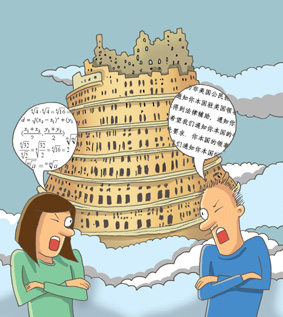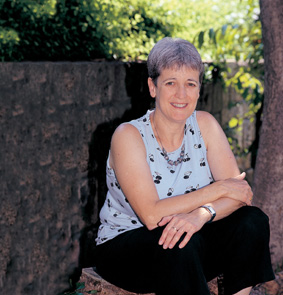How can you bring scientific articles from the front of the research to the classrooms in the schools. Current science education

Communication between scientists is based on scientific articles published in professional journals. This is a text written by scientists, and it is intended for the scientific community, with the aim of sharing discoveries, and allowing the expansion and testing of new findings. Like any language, the scientific articles are written according to defined rules and regulations - known and well understood by all members of the scientific community, but clearly unreadable by anyone outside of it. If a way is found to decipher this language, it will be possible to peek inside the scientific process - to closely observe the work of a scientist, to understand how he thinks, and to witness scientific discoveries. When it comes to students, this is an opportunity to learn, in a lively and interesting way, "how to do science". However, how can the language barrier be overcome?
Several years ago, the scientists of the science teaching department prepared a curriculum for high school students, which deals with the development of the fetus - a broad and complex field, which requires an understanding of a complete scientific language, key concepts and complicated processes. Studying the entire Torah within the allotted time in school is an impossible task. However, then Prof. Benny Giger, dean of the biology faculty at the Weizmann Institute of Science, who served as dean of the institute's Feinberg Lectureship, came up with another idea - to explain to the students how a developmental biologist works and thinks, through the use of scientific articles. Dr. Anat Yordan, who has a background in the field of fetal development, and her research group in the science teaching department, adopted the idea of using scientific articles as a teaching tool, and developed a unique process for processing research articles for use in schools.
Following this initiative - the first of its kind in the world - the textbook "The Secret of Embryonic Development: A Collection of Studies" was created, which includes three groundbreaking articles, selected in consultation with leading researchers in the field of developmental biology. Besides the translation into "human language", additional efforts were made to improve the "accessibility" of the articles: background material, explanations, charts and commentaries were added to them. All this, while strictly maintaining the nature of the scientific article: both in terms of the structure (which includes an abstract, introduction, methods and materials, results and discussion), and in terms of the style (genre) and wording that characterize professional scientific literature. This process created a new type of scientific writing, called by Dr. Jordan and her group APL
(Adapted-Primary-Literature). Following the first book, Anat Yordan's group created another textbook - "Genesis Teachers: A Collection of Research in Biotechnology" - which brings together scientific articles from researchers in the field of biotechnology. Today, the books are used to teach the elective unit of a research topic in the matriculation exam in biology, and the unique project arouses interest and similar initiatives around the world.
In the studies done in Dr. Jordan's group, it was discovered that teaching based on processed scientific articles improves the students' level of thinking. The comparison of the study using a modified scientific article to the use of a popular journalistic article showed that the students do understand the popular text better, but the use of the scientific articles helps them develop research and high thinking skills. That is, the students learn to raise more relevant and sophisticated questions, present criticism, understand the connections between cause and effect, and so on.
A study conducted by research student Heda De Fleck, under the direction of Dr. Jordan, the results of which were recently published in the online edition of the scientific journal International Journal of Science Education, included a first-of-its-kind test of the use of the program in a whole class. This study focused on the way in which the teachers deal with the teaching of the processed texts.
During the research, four classes in different schools were examined, and the findings are based both on conversations with teachers and students, and on observations made in the classes. "It is so inspiring, and illustrates the depth of thinking, and the biological way of thinking," says one of the teachers. "The material was not that difficult, and in fact it was really exciting." Students who participated in the experiment said: "It was more exciting, because this is what scientists really do."
Besides increasing the interest and motivation - of both students and teachers - the use of articles encourages the integration of knowledge, promotes thinking, and helps students grasp the nature of science. The structure of the scientific article, which includes many repetitions, helps in understanding the contents. The research also found shortcomings: the structure of the article, built as a logical chain of findings, which raises new questions, which lead to experiments, and God forbid, may give a wrong idea of the nature of scientific research - which is more random for the most part, and based on trial and error.
Another example is the students' difficulty in understanding how viruses, known to them as disease-causing agents, or antibodies known to them as disease-preventing, can be used as instruments in genetic engineering experiments. Other difficulties related to the skeptical and critical style of the discussion, to understanding molecular research methods, and to the application of knowledge. In the future, Dr. Jordan plans to try to find ways to overcome the difficulties and shortcomings - either by developing suitable teaching methods for studying the articles or by creating supplementary study aids, and changes in the textbooks themselves.

Dr. Jordan points out another advantage of using the articles: the possibility to diversify the curricula, and bring up-to-date biology to the schools. "I would like to find ways to expand the use of essays in biology studies, for example through shorter essays, so that every compulsory subject for matriculation will have a dynamic part based on current scientific articles."
Another idea, which is going to take off as part of the "Caesaria Program" for outstanding teachers, which will be implemented in the institute starting from the coming school year, is to establish a reading club for teachers. The purpose of the club is to encourage science teachers to read scientific articles, process them, and use them in the classroom. In this way, she hopes to expand the use of articles to other fields - such as chemistry and physics.

One response
A blessed venture!
It is very important to raise the level of study and interest in science! I remember when I was a student how difficult it was to find and understand new studies (then I didn't know about the "scientific")